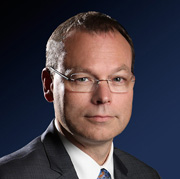Life is an endless series of choices. We learn at an early age that the process of making choices, even when choosing among good options, can be challenging and oftentimes anxiety provoking. Choices are inevitably branch points, and foreshadow change. And with change comes uncertainty. Will our choices be wise? Will we succeed on the new path our choices oblige us to follow?
Oftentimes, holding firm to core principles and values anchors us and assures long-term success during periods of rapid change. Our values become our “True North.”
At Vanderbilt, and at nearly every medical center in the country, the new financial realities impacting health care and research funding are forcing us to make very hard choices. As described in prior communications, there are several parallel economic forces compelling all health systems, from large academic centers like ours to community hospitals across our state, to take unprecedented actions to reduce costs.
After months of analysis that involved an inventory of a vast array of mission activities through Evolve to Excel (E2E), we began a Medical Center-wide workplace redesign process. In the end, the process has necessitated some of the most agonizing choices any of us will make in our careers — those that impacted our friends and colleagues through staffing reductions. When the lives of people are adversely impacted, it is important to just admit that sometimes all of the options are painful ones.
As we make these choices, we are fortified by holding firm to two key principles: 1) Preserve and strengthen our core missions — leadership and world-class quality in our health care, education, and discovery activities, and; 2) Assure that the needs of our people — their well-being and their goals and dreams for the future — remain our highest priority.
For example, given our sizeable workforce, through routine retirements or departures, we normally have considerably more than 1,000 positions open each year. With your support we instituted a hiring freeze beginning last winter, creating significant challenges for all VUMC divisions, but through your discipline and sacrifice created hundreds of open positions. These open positions were prioritized for elimination in our E2E workflow redesign efforts, saving nearly 800 VUMC jobs so far this year. Our pledge to move through these challenges in a way that preserves as many jobs as possible is a testament to the fundamental, core commitment Vanderbilt has to its people. True North.
It takes a great deal more effort to redesign workflow than simply to order layoffs. While time-consuming and anxiety provoking, in many cases our efforts have not only increased cost effectiveness, but also improved the quality of services and increased employee satisfaction. For example, in re-evaluating how best to deliver respiratory care, we developed new evidence-based protocols for ordering breathing therapies. Optimizing these practices has yielded up to 40 percent reductions in the number of required treatments, allowing our therapists to spend additional quality time with each patient. And time and motion studies on VUH 5 South and 6 South have revealed unnecessary variation in the schedules for medication administration, producing inefficient use of nursing time. With engagement from VUH Pharmacy Operations, schedules were identified that reduced medication administration times by nearly a third, greatly increasing the time nurses could spend providing direct care for their patients.
As we make tough choices, patients are always at the center of our thinking. While our workforce reductions have been focused mainly on administration and management as opposed to employees directly caring for patients, we are nonetheless cognizant that many programs support the bedside caregiver and nourish the clinical atmosphere at Vanderbilt. For example, we recently created a new program in the Monroe Carell Jr. Children’s Hospital at Vanderbilt focused on helping our clinicians organize care for the medically complex child, assuring the vast number of clinical services required to care for these children are optimally coordinated, saving multiple trips to the hospital for children and their parents. We are committed to preserving ALL programs that sustain our distinctive focus on personalized care. These include programs aimed at supporting patients and families in periods of crisis such as Child Life, chaplaincy and palliative care, as well as programs that guarantee the best possible patient experience in our bustling tertiary health care setting, such as interpreter services, guest services, patient relations and volunteer services.
It is important to recognize that in many cases we are making active decisions not to change course. For example, our commitment to extraordinary health care extends to all people. The Medical Center provides by far the most uncompensated care for uninsured patients in the region — $477.4 million in the most recent fiscal year — and that extraordinary commitment has not changed. And we recently considered implementing an automated parking system for patient and visitor garages located on our 21st Avenue campus that would have recovered $8 million of the funds the Medical Center spends each year to support these facilities. In response to concerns from both from patients and providers, and to assure all patients and families will have full access to VUMC health care, we postponed this option.
At the same time, across all areas of VUMC we are tackling challenging obstacles and pushing forward with cost-reduction activities. For example, the cost of supplying administrative support for research is unsustainable through a traditional “dispersed, distributed” support model that has benefits but is no longer economically viable. To tackle this challenge we have been reengineering the administrative support for our research enterprise from more than 30 separate units into a smaller number of larger administrative pods. While “simple” in concept, this effort has required tremendous flexibility and creativity on the part of both faculty and staff because it requires changing years of historic workflow patterns. Nonetheless, the funds saved through this reorganization are allowing us to provide critical ongoing support that is vital to the success of our discovery programs. For example, we have expanded our Bridge Funding Program this year to support investigators during federal grant renewal cycles when funding gaps threaten to delay progress or put vital programs at risk. And for our new investigators, major funding from the National Institutes of Health (NIH) is not achieved quickly, even after years of doctoral and postdoctoral training — across the United States the average age of faculty members receiving their first independent NIH funding is now 42. So we continue to invest heavily in start-up support for superb new faculty, recruited from our own training programs and other leading centers, as they work to achieve sustaining levels of external funding.
Given the existing and forecasted reductions in the federal NIH budget, we have also delayed plans to occupy a multidisciplinary research building. We are already one of the very largest biomedical research programs in the country. Our financial priorities at this time should be aimed at reinforcing the vitality of VUMC research so that our world-class programs, departments and centers will continue to lead and outpace the competition in an extraordinarily fierce funding climate. As such, financial investments in faculty research programs and space renovations in FY 2014 will be at the highest levels in VUMC history, despite tremendous external pressures and opposing trends elsewhere in the industry. Here, “True North” is an unwavering commitment to our investigators as they lead the nation in discovery.
In education, we are also making difficult choices. True, the nation needs more physicians with the nationwide workforce projecting a shortage of nearly 150,000 doctors in the year 2025. At the same time, we are realistic about the limited health care revenues available to support M.D. and postgraduate (residency/fellowship) training, as well as the limitations on training funds and job opportunities for Ph.D. graduates in an era of declining NIH budgets.
Here, our focus on core principles is fundamental. As a leading private institution, Vanderbilt plays a role in supplying the nation’s health care and biomedical science workforce, but our central focus is to train the extraordinary clinicians and scientists who will become leaders. As such, the individuals we train are a precious national resource. Our priority must be quality, not quantity. So, in many cases we are capping the number of trainees in our residency and fellowship programs to assure we can continue to provide the meaningful research and scholarship training experiences that are signatures of the nation’s leading clinical training programs. And we are reducing our M.D. and Ph.D. matriculating classes by approximately 10 percent. Still similar in size to the classes at the leading private institutions, these modest adjustments will assure we can provide unparalleled student mentoring by a faculty committed to hands-on engagement with students, even as they treat ever-larger numbers of patients, and write ever-larger numbers of applications for research funding.
True North is never changing. It can be trusted in stormy weather. At Vanderbilt, we are holding fast to our values and principles, and we will never lose our way.
Jeff Balser, M.D., Ph.D.
Vice Chancellor for Health Affairs
Dean, Vanderbilt University School of Medicine















